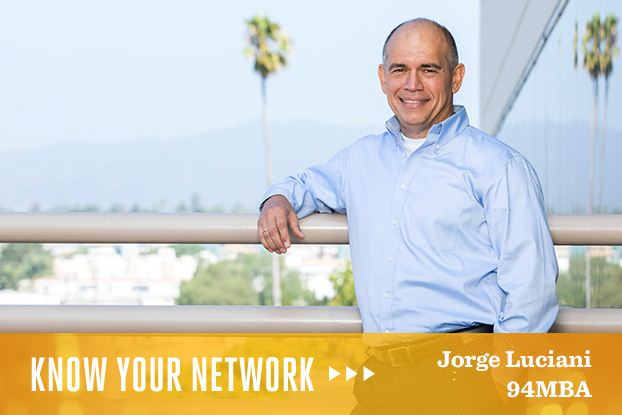With a look to the school’s future influence, the rigorous research methodologies imparted by Goizueta faculty are passed on to doctoral graduates. The following is a sample of recently created and ongoing new knowledge.
Let them go?
With human capital, the rule is to not only attract the best talent but to retain it, right? Not necessarily, says research by David Tan 09PhD. Tan, who is associate professor of management at the University of Washington (Foster), and coauthor Christopher I. Rider from the University of Michigan (Ross) have put an intriguing hypothesis to the test: can a firm gain status when employees leave for high-status competitors? Their findings suggest that it can. They analyzed data from the 200 highest-grossing law firms in the U.S. between 2004 and 2013 and found that while losing employees can detrimentally affect productivity, it can also signal to prospective employees that your firm is a stepping stone for career-enhancing opportunities. In other words, it might make you more attractive to ambitious and high-value new recruits. The research represents a dramatic departure from prevailing thinking on what Tan calls the “retention imperative” in strategic human capital management, and it sheds light on an interesting new channel through which losing employees might actually improve a firm’s competitiveness in the labor market. The question to employers and HR managers is, under the right circumstances, mightn’t it be better to let them go? Strategic Management Journal (2017)
The democratization of investment research
To function well, financial markets need to provide high-quality information to a broad base of investors. Without it, pricing securities gets difficult, and markets can end up stagnating. At the same time, information with high investment value tends to be costly to produce, which has left individuals at a perennial disadvantage relative to institutional investors. To counter this, new platforms are emerging that leverage social media–style technology to share, exchange and curate high-value investment research to all investors. But are individuals actually reading and benefiting from the research provided by these new platforms? A forthcoming study by Russell E. Jame 10PhD at the University of Kentucky (Gatton) suggests they do. Together with colleagues from Gatton and the University of Texas at Dallas and Goizueta’s T. Clifton Green, Jame has tested retail investors’ response to popular investor site Seeking Alpha. He finds that there’s a sharp increase in retail trading in the 30-minute period following an article being published on the site. And on the days articles are published, the relation between retail order flow and future returns increases threefold. This all points to Seeking Alpha helping retail trading engage in more informed trading. (Working Paper)
Too good to hire
In an increasingly competitive labor market, having a killer résumé should position you favorably with potential employers. But a new paper by Adina Sterling 11PhD, associate professor of organizational behavior and sociology at Stanford Graduate School of Business, asks whether highly capable candidates aren’t being penalized in the hiring process by managers who have concerns about their future commitment to a firm. Together with colleagues from Johns Hopkins and Carnegie Mellon, Sterling ran a series of four experiments with U.S. hiring managers to test the idea that candidates with stand-out credentials might be perceived as prioritizing their personal and professional development over a commitment to a specific employer. And her findings suggest that managers do indeed see highly capable candidates as having lower levels of organizational interest. Critically, because these candidates are perceived as having more external job options, they are also seen as a higher flight risk than less able individuals. Penalizing high-caliber talent in this way, warns Sterling, carries the risk of lower market mobility for the most able, while simultaneously threatening long-term competitive advantage for firms: a zero-sum game scenario that should be addressed, she argues, by a “more systematic relationship” between ability signals and negative screening decisions on the part of hiring managers. She and her coauthors also urge highly capable candidates to do more to convey personal interest and commitment at the hiring stage and to leverage human networks over platforms for referrals that may help circumvent the issue. Administrative Science Quarterly (2019)
How do adopters transition between incumbent and new channels?
When people or organizations adopt a new channel, such as a mobile shopping app or an online learning system, what happens to their use of the incumbent channel, e.g., a physical store or classroom? Do they phase out their use of the incumbent channel, do they use both channels indefinitely or do they revert back to the incumbent channel? These are the kinds of questions that intrigue managers who introduce new channels and are tasked with determining whether—or how much—to continue supporting existing channels. And they are the questions at the heart of new research by Eric Overby 07PhD, associate professor at Georgia Tech (Scheller). Overby and Sam Ransbotham of Boston College analyzed transaction data reflecting how used car dealers used a new electronic purchasing channel and the incumbent physical purchasing channel over a six-year period. They found that dealers who adopted the electronic channel at similar times followed dramatically different patterns of channel use: some quickly abandoned the physical channel (replacement), others used both channels (extension) and others reverted back to the physical channel (discontinuance). According to Overby, “This allows us to extend the traditional adopter categories of innovators, early adopters, early majority, late majority and laggards. For example, we found that some innovators are replacers, others are extenders and others are discontinuers.” Overby and Ransbotham also find that the longer someone has used the channels, the more likely they are to be an extender vs. a replacer. Overby and Ransbotham arrange their findings into a framework that gives managers new tools to understand why people and organizations follow one pattern of channel use over another and to develop intervention strategies to drive optimal use. MIS Quarterly (2019)
Close experience with potential sanctions and fraud deterrence
Every year, companies and investors lose approximately $1 trillion to workplace fraud in the U.S. Understanding how effective regulation is in punishing offenders and (more importantly) deterring future fraud is critical both from a societal and economic perspective. W. P. Carey School of Business’ Roger White 17PhD and Hankamer School of Business’ Melanie Millar 16PhD have just published research that looks at the efficacy of sanctions on perpetrators using a novel lens: New York City taxicabs. Rate-code fraud—charging an out-of-town rate for local rides—is fairly prevalent among drivers, and it’s estimated around 10% of drivers commit this type of fraud multiple times per week, amounting to a cost to riders of more than $8 million per year. Using GPS field data from NYC taxicabs paired with data from taxi court, the regulator’s enforcement mechanism, White and Millar, along with Jeremy Douthit from Eller, have analyzed the deterrent effect of potential sanctions. Surprisingly, the researchers find that taxi drivers who have been found guilty in the past are more likely to commit fraud than drivers who have no experience of the court. The authors put this down to a complex psychological phenomenon called “affective forecasting”—the typical habit of overestimating the effect a negative outcome will have on us. Drivers who have been found guilty of fraud don’t use affective forecasting, as they’ve already experienced the sanction, which is likely to have a less negative impact than they imagined. This suggests that the sanction will be a weaker deterrent for rate-code fraud for drivers who have been previously found guilty than for those without direct experience with the sanction. Food for thought for policy makers, says White, as the threat of enforcement can be more effective at deterring future fraud than the actual enforcement itself. Organizational Behavior and Human Decision Processes (forthcoming 2020)
Demutualized stock exchanges
When a private, member-owned company (a cooperative or a mutual life insurance company, say) is publicly listed and becomes a joint-stock company, the process is known as demutualization. For some time, demutualized stock exchanges have fallen under scrutiny from regulators, multiple market participants and the academic community because the change in operating structure within these newly listed firms is thought to incur a decline in regulatory oversight. A new paper by Carey School of Business’ Maria Rykaczewski 13PhD and colleagues from Arizona State and Florida International Universities finds that for these firms, liquidity improves post-demutualization. But this is likely due to a decline in the reporting quality, which in turn points to a decline in regulatory function of demutualized stock exchanges. Rykaczewski’s research draws a sample of firms traded on 14 stock exchanges that demutualized in the period 1999–2008 and a control group of firms traded on 17 stock exchanges that did not demutualize or demutualized de jure (without actually changing their ownership structure). The findings give substance to concerns about self-regulatory behaviors of the U.S. demutualized stock exchanges, which critics deem to be at odds with their for-profit orientation and precariously close to monopolistic in nature. Rykaczewski and her coauthors quote Securities and Exchange Commissioner Robert Jackson, who warned in 2018 that while for-profit businesses in America can be sued when they are found responsible for causing harm, U.S. stock exchanges assert that they are “immune from liability on the theory that they are acting as regulators rather than profit-makers.” (Working Paper)
Measuring the impact of product placement
We’ve all seen the messages on favorite TV programs or films containing product placement. As a marketing technique, product placement is gaining traction. But is it effective? New research from the Kelley School of Business’ Beth Fossen 16PhD and Goizueta’s David Schweidel, professor of marketing, suggests it is. Fossen and Schweidel looked at data from just short of 3,000 product placements for 99 brands on U.S. television from fall 2015 to determine the impact on social media activity and website traffic for featured brands. They found that while product placement did lead to an increase in traffic and social “heat” in general, the effect was particularly noticeable with verbal placement as opposed to visual. The researchers put this down to greater plot integration—with actors required to say the name of the product, rather than it simply appearing in the background of a scene. That being said, while product placement offers an alternative channel to help marketers reach consumers who have become inured to traditional advertising, Fossen and Schweidel warn of unintended consequences should placement interfere with plot or feel out of place; this, they say, can distract, irritate or create negative associations for the viewer. Marketing Science (2019)











